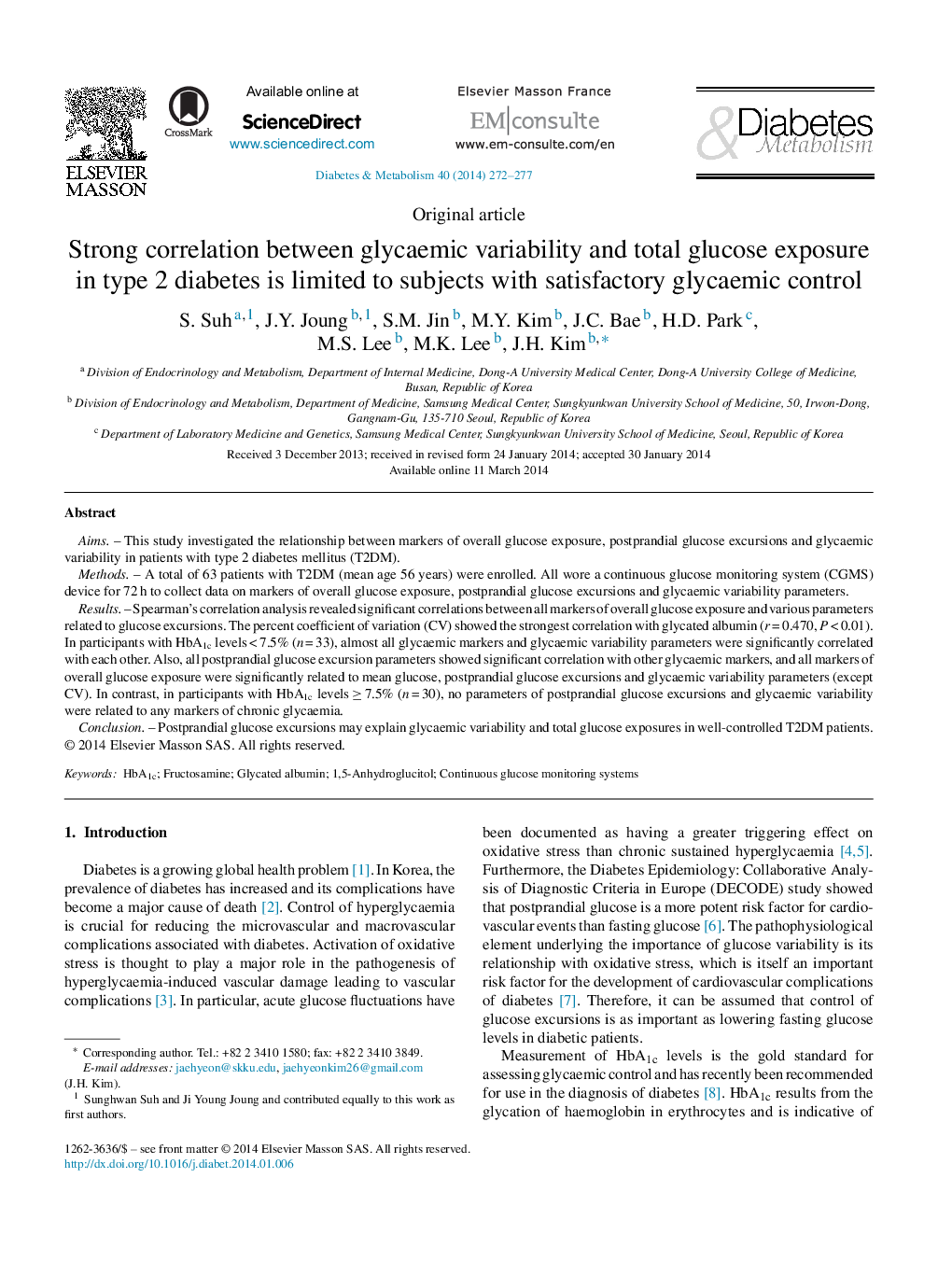| Article ID | Journal | Published Year | Pages | File Type |
|---|---|---|---|---|
| 3259364 | Diabetes & Metabolism | 2014 | 6 Pages |
AimsThis study investigated the relationship between markers of overall glucose exposure, postprandial glucose excursions and glycaemic variability in patients with type 2 diabetes mellitus (T2DM).MethodsA total of 63 patients with T2DM (mean age 56 years) were enrolled. All wore a continuous glucose monitoring system (CGMS) device for 72 h to collect data on markers of overall glucose exposure, postprandial glucose excursions and glycaemic variability parameters.ResultsSpearman's correlation analysis revealed significant correlations between all markers of overall glucose exposure and various parameters related to glucose excursions. The percent coefficient of variation (CV) showed the strongest correlation with glycated albumin (r = 0.470, P < 0.01). In participants with HbA1c levels < 7.5% (n = 33), almost all glycaemic markers and glycaemic variability parameters were significantly correlated with each other. Also, all postprandial glucose excursion parameters showed significant correlation with other glycaemic markers, and all markers of overall glucose exposure were significantly related to mean glucose, postprandial glucose excursions and glycaemic variability parameters (except CV). In contrast, in participants with HbA1c levels ≥ 7.5% (n = 30), no parameters of postprandial glucose excursions and glycaemic variability were related to any markers of chronic glycaemia.ConclusionPostprandial glucose excursions may explain glycaemic variability and total glucose exposures in well-controlled T2DM patients.
